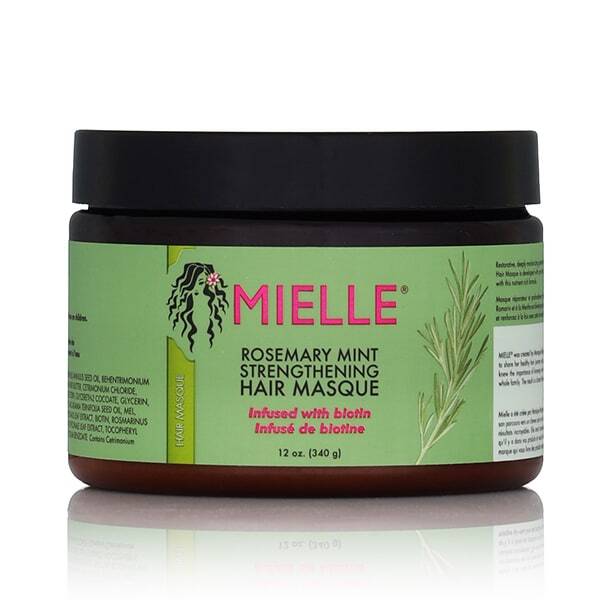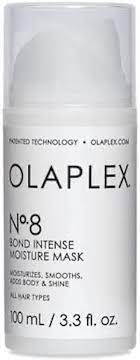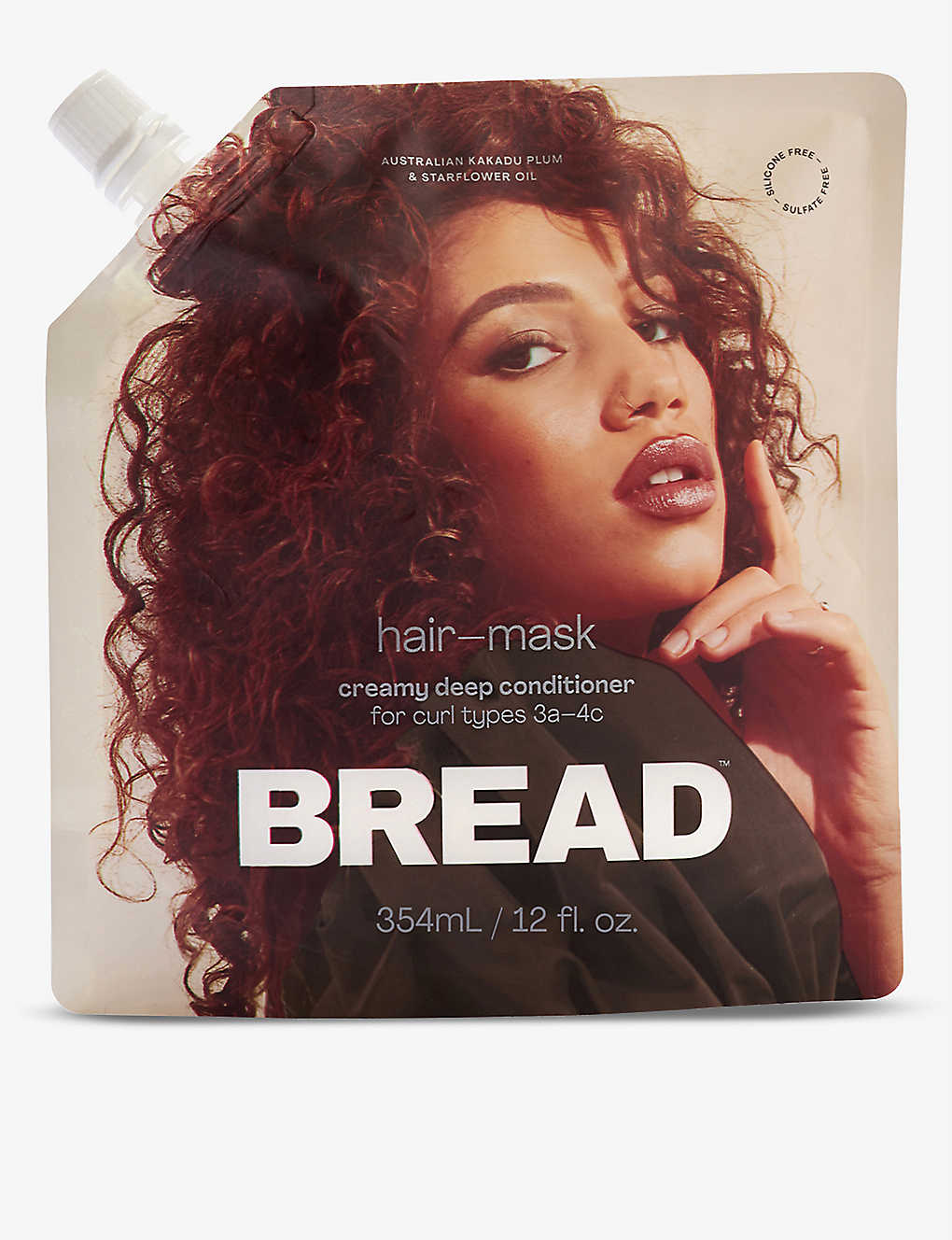Actually, Hair Masks Are Better Than Oils For Natural Hair
The rise of TikTok hair trends means we have a plethora of information from content creators, influencers and brands at our fingertips, virtually guiding us through hair shops and beauty supply stores on the hunt for the ‘best product’ — especially those that actually work on natural 4C hair textures. From whether we should or shouldn’t use hair oils in our wash day routines, or spend our coins on that £500 Dyson hair dryer, we are inundated with hair trends, tutorials, tips and tricks, both new and cyclical. Debates surrounding Black hair care advice and recommendations can also get heated (cc: Mielle Hair Oil). Yet, once you make it through the chaos, one product that has managed to defy the constant flip-flopping of short-lived trends is the wash day staple: a hair mask.
AdvertisementADVERTISEMENT
A hair mask is a type of conditioning treatment that is said to deeply nourish, hydrate and improve overall hair health. Different masks are equipped at solving different hair ‘concerns’, with some claiming to banish dry hair, enhance shine and smoothness and go as far as ‘repairing’ heat-damaged strands. For afro-textured hair, hair masks have been said to encourage thickness, an itch-free scalp and lengths for days. Professionals also say they can aid in hydration and deposit conditioning agents to fully nourish even the most damaged strands of our hair.
Celebrities like Cardi B, popularly known for having beautiful hair, have sworn by masks in their regular routine. Back in 2020, Cardi shared her highly sought-after DIY hair mask concoction —made up of hair mayonnaise, argan and castor oil — which has maintained her and her daughter Kulture’s curls. "This treatment is really good for curl patterns, it's a good hair mask to help your hair grow. All the good things you put in your body, you put in your hair,” the WAP rapper confirmed.
Yet are DIY masks as good as the natural hair community and celebrities claim them to be? And why do some experts claim that masks are even better than hair oils when it comes to nourishing and conditioning curly hair textures? Textured hair experts explained to Unbothered why it may be time to swap oils for masks and the simple trick to fully reap the benefits when applying and using a mask on your natural hair.
AdvertisementADVERTISEMENT
Hair masks vs hair oils
Much like other hair products on social media at the moment, hair masks have been overshadowed by a revitalised obsession with hair oiling. Oiling is simply applying an oil to your scalp and the ends of your hair before continuing with your wash routine and is a method that has been practised by South Asian and Black communities for decades.
TikTok creators that have recently gone viral for their dedication to the trend are Golab Beauty (2 million followers), who calls oiling “a game changer for hair growth” and ‘greasy hair queen’ Ellie Pembs (88k followers) who says her pre-wash oiling routine has helped her achieve “thicker and stronger” locks.
While using oils to nourish the hair and promote hair growth is a generational habit for TikTok’s Black hair community, the Black-owned Mielle Organics Rosemary Mint Scalp and Hair Strengthening Oil has had incredible results amongst people with textured and straight hair, causing a divide as the oil flys off store shelves.
Licensed tight curl stylist, Anita Wilson (@monarchcurl) weighed in on the Mielle drama with a controversial take, tweeting: “RT if a hair oil being out of stock doesn’t impact you since you’ve learned using oil on your hair and scalp isn’t helpful or beneficial.” Wilson's advice has been echoed by professionals all over the internet.
RT if a hair oil being out of stock doesn’t impact you since you’ve learned using oil on hair and scalp isn’t helpful or beneficial
— Anita • LA Licensed Tight Curl Stylist (@monarchcurl) January 1, 2023
Providing a solution to the oil debate, consultant trichologist Eleanore Richardson told Unbothered that hair masks are better than oils anyway, thanks to their “conditioning, hydrating and moisturising ingredients."
AdvertisementADVERTISEMENT
“I would always use a hair mask over oils as hair masks. They will help to replenish water content, deposit conditioning agents over damaged areas of the hair shaft and also lubricate the outer hair shaft to reduce friction and tangling,” she stated. Eleanore continued: “If your hair doesn't feel like it is recovering even after quality hair mask treatment, it may be time to see a trichologist for a proper diagnosis.”
DIY vs shop-bought hair masks
It’s arguably the ease of hair masks which has made them so desirable. They’re everywhere and there’s a large variety to choose from, for example, Garnier, who released their ‘Hair Food’ range in 2019, gave consumers five masks, each with different ingredients and focuses, to decide between. British beauty retailer Boots’ textured hair section — which continues to grow despite being significantly smaller than areas in-store for straight and wavy hair— boasts Black hair brands such as As I Am, Boucleme and Camille Rose Naturals, which has deep treatment masks in eight out of nine of their hair collections. More recently, Tracee Ellis Ross’ hair brand Pattern Beauty, not only offers different masks but includes them in hair care bundles that come with all the necessary products for your hair needs.
“
"A lot of DIY [hair mask] recipes are oil-heavy which can cause irritation..."
Ebuni Ajiduah
”
Competing with shop-bought masks are DIY ones, which are just as popular and can be made from household ingredients, such as honey, olive oil, avocado, eggs and more. Going DIY with a hair mask allows you to choose the ingredients that supposedly cater best to your hair needs, but London-based trichologist Ebuni Ajiduah, says it’s best to avoid food-based DIY masks altogether.
AdvertisementADVERTISEMENT
“The hair doesn’t have a digestive system so the nutrients can’t penetrate,” she explained. “A lot of DIY recipes are oil-heavy which can cause irritation and will coat the strands making it look and feel soft but inside, the results aren’t the same.”
Not all homemade hair masks are completely au natural though. The Aztec Indian Healing Clay, a calcium-bentonite mask that doubles as a product for skin and hair, has had its moment in the spotlight for some time now, with its tag on TikTok garnering over 29.3 million views. Typically mixed with apple cider vinegar or water, the clay mask became the go-to for a deep scalp cleanse with some even praising the product for revitalising curls after just one use. With that being said, the mask was met with mixed reviews overall as some found the mask incredibly drying and had to take multiple steps afterwards to bring moisture back into their strands.
How to get the most out of your mask
Finding a suitable treatment isn’t the last step of the hair mask saga. Not only do masks have different ingredients and results, but they also have different ways to use them depending on the chosen treatment.
For those who are too busy to sit with a mask on but want the results of a deep condition, overnight masks work while you sleep and can be removed in the morning, so, while you’re dreaming about your celebrity crush, the mask is given eight hours to fully penetrate the hair follicles, therefore your hair is given more time to reap the benefits. But, it’s important to remember that not all hair masks are for overnight use and while it’s said that ‘the longer you leave the mask on, the better,’ that’s not always the case.
AdvertisementADVERTISEMENT
Ebuni goes as far as advising her clients against keeping masks on overnight as the effects could quickly plateau. “I tell my clients to avoid overnight as this may cause unintended harm to the hair, for example, tangles and breakage, as the hair can be more delicate when wet.”
“With most masks and deep conditioners, they are made to work very quickly, usually in under 20 minutes. After this point the effects plateau,” she explained before stating her simple advice for budding hair mask users: “Just follow the directions for the product!”
Hair mask recommendations
If you’re struggling with where to start when shopping for hair masks, my tried and tested list of recommendations should help with any hair concern you may have.
When applying the treatment, Eleanore Richardson recommends using the help of a trusty wide-toothed comb to ensure the product has reached every inch of your hair. “After shampooing and cleansing the hair thoroughly, use a mask from root to tip, detangle hair with a wide-toothed comb and place a shower cap over your masked hair for 20 mins,” she advises. For those with a water vapour-based steamer at home, Eleanore recommends ditching the shower cap and sitting under it for 10-15 minutes.
Refinery29's selection is purely editorial and independently chosen – we only feature items we love! As part of our business model we do work with affiliates; if you directly purchase something from a link on this article, we may earn a small amount of commission.
This article was originally published to Unbothered UK
AdvertisementADVERTISEMENT









